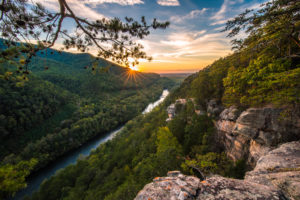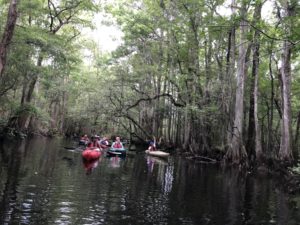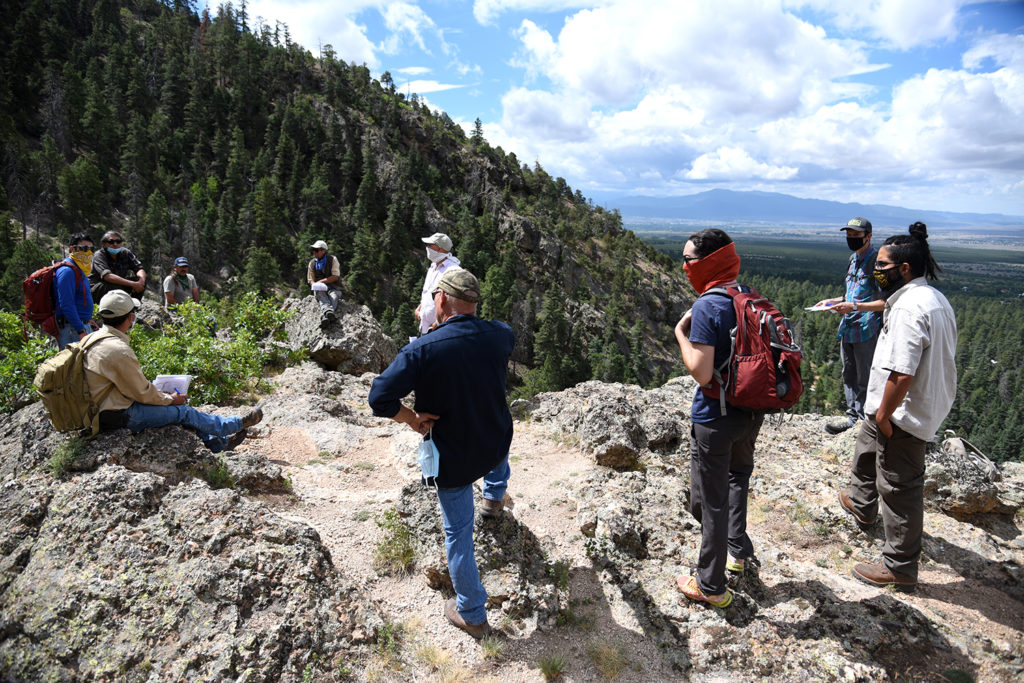
NEWS RELEASE
BOZEMAN, MT, October 11, 2022 – This is a watershed moment for conservation in the United States. The Biden administration’s America the Beautiful initiative—along with the Bipartisan Infrastructure Law and Inflation Reduction Law—is driving unprecedented levels of funding into the restoration, stewardship, and conservation of our lands and waters. But this reveals a gap that needs to be filled: the on-the-ground capacity to get the work done. The Catalyst Fund, with support from the Doris Duke Charitable Foundation and the William and Flora Hewlett Foundation, aims to build capacity and help local and regional partnerships contribute toward achieving national conservation goals.

The Network for Landscape Conservation recently announced its newest round of Catalyst Fund grants, with 13 partnerships from throughout the United States receiving awards totaling more than $320,000 in support.
“These grants are aimed at strengthening the collaborative capacity of partnerships that demonstrate a genuinely collaborative approach to protecting the landscapes they call home, so that these partnerships can accelerate the pace and scale at which they realize successful conservation outcomes,” says Jonathan Peterson, Program Manager for the Network for Landscape Conservation.
Launched in 2019, the Catalyst Fund has now supported 55 landscape partnerships, distributing a total of more than $1.3 million in grants nationwide across four annual grant cycles.
These investments are timely: The scope and urgency of the climate and biodiversity crises and the legacies of environmental injustice require action at a landscape scale. The emerging federal funding recognizes this, focusing on getting projects with landscape-level impact completed on the ground. There is a missing piece though: investments are needed to support the processes of bringing people together across jurisdictions and perspectives, and of integrating the appropriate sciences and knowledge to imagine, develop, and be ready to deliver projects. Supporting the collaborative capacity of landscape partnerships is critical to maximizing the impact of the federal funding.
“The Catalyst Fund grants provide a unique opportunity to accelerate collaborative conservation projects across the country,” says Sacha Spector, program director for the environment at Doris Duke Charitable Foundation. “Tackling complex challenges like climate change, biodiversity loss and environmental injustice requires ambitious and innovative action that brings people together across geographic and institutional boundaries. We’re excited to support the Catalyst Fund’s effort to sustain capacity, foster collaboration and develop solutions that result in strong partnerships and connected landscapes.”

The Catalyst Fund is based on the belief that deep approaches to collaboration—in which understanding and connection is built across difference, and power is shared with those that have been historically excluded—are critical to efforts to sustain the ecological health of our landscapes and foster a more just, equitable future for our communities. A portion of the Fund is specifically dedicated to supporting Indigenous leadership in landscape conservation.
“At the core of the Catalyst Fund is the idea that people across the country care deeply about the places that they call home—the valleys, watersheds, mountain ranges, prairies, bays and estuaries that together make up the heirloom quilt of America’s lands and waters,” says Andrea Keller Helsel of the William and Flora Hewlett Foundation. “There is lots of evidence that the diverse interests within those places are willing and able to work together to conserve the natural and cultural values they cherish. Catalyst Fund grants provide the wherewithal, particularly for underserved communities, to convene partners to discuss and shape their future and to chart a path forward. These grants express faith in the wisdom of people to gather good information to make wise decisions about the conservation of our national landscape legacy.”
The 2022 Catalyst Fund grant recipients are:
- Bi-State Tribal Natural Resource Committee (California/Nevada—ancestral homelands of the Paiute, Washoe, and Western Shoshone)
- Blackstone Watershed Collaborative (Massachusetts/Rhode Island)
- Butte Creek Watershed Restoration Collaborative (California—ancestral homelands of the Mechoopda Indian Tribe of Chico Rancheria)
- Cold Hollow to Canada Regional Conservation Partnership (Vermont)
- Greater Chilkat Watershed Advisory Group (Alaska—ancestral homelands of the Jilkaat and Lkoot Tlingit)
- Nesika Wilamut (Oregon—ancestral homelands of the Confederated Tribes of Grand Ronde and the Confederated Tribes of Siletz)
- Salt Valley Watershed Landscape Conservation Partnership (Nebraska)
- Shoal Creek Watershed Consortium (Missouri)
- Stewarding the Asqinaq (Alaska—ancestral homelands of the Yup’ik)
- Tri-Pueblo Coalition (New Mexico—ancestral homelands of the Cochiti, Jemez, and Santo Domingo Pueblos)
- Upper Arkansas Watershed Partnership (Colorado)
- Western Klamath Restoration Partnership (California—ancestral homelands of the Karuk)
- Yuba Forest Network (California)
Learn more about the 2022 grant awards
About the Network for Landscape Conservation
The Network for Landscape Conservation advances collaborative, community-grounded conservation at the landscape scale as an essential approach to connect and protect nature, culture, and community. The Network connects people to ideas and innovations – and each other – building a community of practice for the field of landscape conservation. Its rapidly growing network currently includes more than 250 organizational partners and nearly 6,000 individual practitioners. The Network for Landscape Conservation is a fiscally sponsored project of the Center for Large Landscape Conservation. Learn more at landscapeconservation.org
About the Doris Duke Charitable Foundation:
The mission of the Doris Duke Charitable Foundation is to improve the quality of people’s lives through grants supporting the performing arts, environmental conservation, medical research and child well-being, and through preservation of the cultural and environmental legacy of Doris Duke’s properties. The mission of the Foundation’s Environment Program is to ensure a thriving, resilient environment for wildlife and people, and foster an inclusive, effective conservation movement. Learn more at: ddcf.org
About the William and Flora Hewlett Foundation:
The William and Flora Hewlett Foundation is a nonpartisan, private charitable foundation that advances ideas and supports institutions to promote a better world. For more than 50 years, they have supported efforts to advance education for all, preserve the environment, support vibrant performing arts, strengthen Bay Area communities, make the philanthropy sector more effective, and foster gender equity and responsive governance around the world. Learn more at hewlett.org
Contact:
Christine Gianas Weinheimer
Center for Large Landscape Conservation
(406) 578-1579
communications@largelandscapes.org
Photo, top: Members of the Taos Valley Watershed Coalition discuss project priorities during a field trip to El Salto del Agua Association lands near Taos. TVWC is a 2021 Catalyst Fund grantee. Credit: Taos Valley Watershed Coalition.



